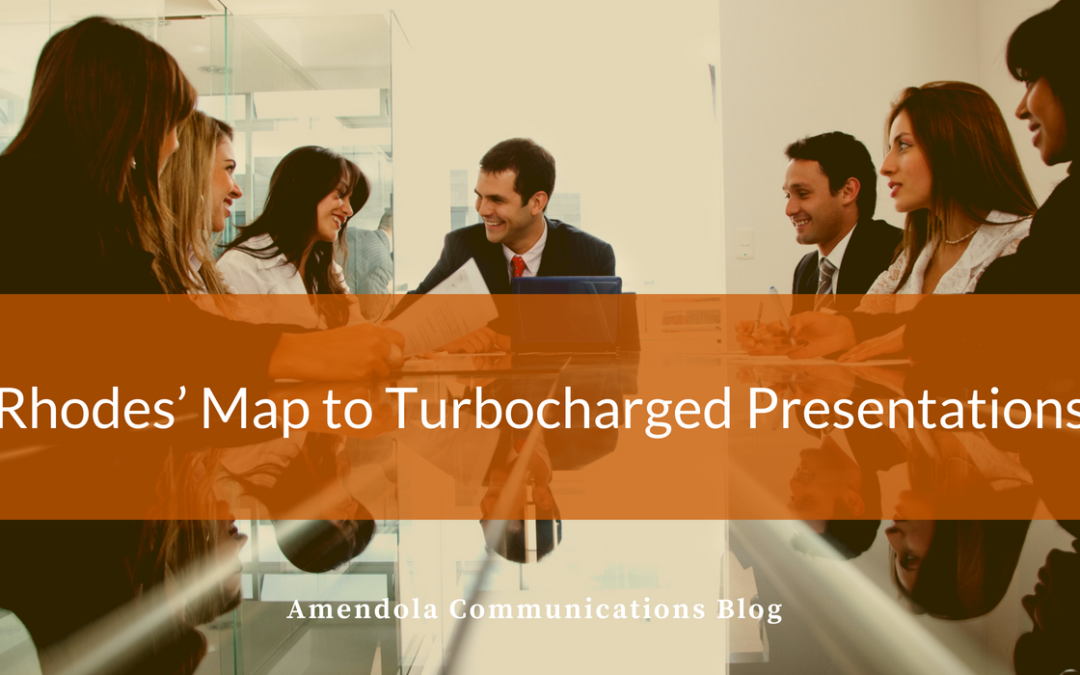
by Marcia Rhodes | May 30, 2018 | Blog
When it comes to HIMSS Global Conference speaker proposals, Amendola Communications enjoys a 75% win rate. That means that out of 12 speaking abstracts we write and submit on behalf of our clients, nine are accepted.
Quite impressive considering that HIMSS has a less than 30% acceptance rate. In fact, for HIMSS18, 742 proposals were received and only 224 were accepted, which means 518 were declined.
The process is not easy and takes anywhere from 12-16 hours per proposal. If only clients would invest the same time and energy in preparing their presentations! If clients were willing to carve out time for presentation training or coaching before they get up on the stage, here is what I would suggest.
Grab attention. High tech need not be dry tech. Instead of diving right into your presentation, open with a bang with one or more of the following:
- Startling statistic or statement
- Rhetorical question
- Historical analogy or example
- Quotation
- Personal anecdote
- Something specific to your audience
- Something to make audience feel good about themselves
- Promise
- Meme
- Short story (see example below)
- Headline from today’s newspaper (show newspaper)
For this last one, I am quoted in the book Presentations for Dummies (as Marcia Lemmons, my former married name) sharing this very tip. I first saw it used by a business development director at Accenture where I worked in the 90’s. The biz dev director would begin his presentation by holding up a fresh copy of USA Today or the Wall Street Journal. He would point to a headline and find a clever way to tie it to his presentation. This had the effect of making his presentation more current, relevant and way more interesting.
Short stories can be impactful if you can deliver them in 30 seconds or less. I saw this technique used very effectively by a Six Sigma Master Black Belt who would tell “The Dolphin Story” to open a workshop on the Voice of the Customer. It went like this:
“During World War II a mythology developed that dolphins love people. It was a myth propagated by sailors who dolphins rescued from drowning by pushing them ashore. A crew decided to set up camp on a ship to observe this first hand. After a few weeks on the ship, they concluded: dolphins don’t love people”¦they like to push things”¦the problem is we never hear from the people they push back into sea.”
State the problem or need. Why should the audience care? Spend one to two minutes sharing evidence, data, news reports or personal experience to illustrate the problem or opportunity. Stating the challenge up-front makes the audience uncomfortable enough that they will want to stay to hear your solution. This is referred to as the “tension-relief” technique used by playwrights.
Establish a pattern. Tell the audience what to expect from you in the next hour. Provide a roadmap agenda so they can more easily follow along.
Presentation patterns can be in the form of:
- Lists
- Chronological order
- Physical location (ex: Europe, Asia, N. America)
- Extended metaphor
- Divide a word
- Before/after
- Theory/practice
- Why/how/what
- Provider/payer/pharma
- Classic story (three acts)
Share the solution. This is the guts of your presentation; the knowledge or expertise you have been asked to share. Tip: When creating your presentation, you can get a jumpstart by working on this section first then working on your intro, extro and other slides later. You will find your creativity will kick in once you feel confident in what you have to say and can easily build on top of it.
Finish strong! Remind your audience of what they’ve just heard. In this section you can underscore the problem or remind them of what’s worth remembering. What are they supposed to do or change? Tie your closing statements to your opening grabber so the presentation feels whole and complete; you’ve come full circle. Give a clear signal that “We’re done.”
Rethink Q&A
Many presenters make the mistake of ending their presentation with the audience Q&A. They take questions from the audience and provide answers that they may not have had a chance to prepare for. This is also the section where it is easy for a speaker to lose control of the room. We recommend taking no more than six questions before bringing your presentation to a proper close with a few choice statements. You might even ask and answer your own question at the very end. For example, “One question CIOs almost always ask me is”¦.” Then provide your well thought-out answer.
Making it work
As a society, we don’t just want to be informed. We want to be entertained too. Just look at the news today compared to 30 years ago. As they say, “Educate the best, entertain the rest.”
The same holds true for presentations. The more lively and engaging you make it, the more your audience will be interested in what you have to say. Think through the structure, grab their interest from the beginning, and give them valuable insights they didn’t know before and you’ll keep your audience riveted. Then sit back and enjoy the applause.
And if you need a little help, give us a call!
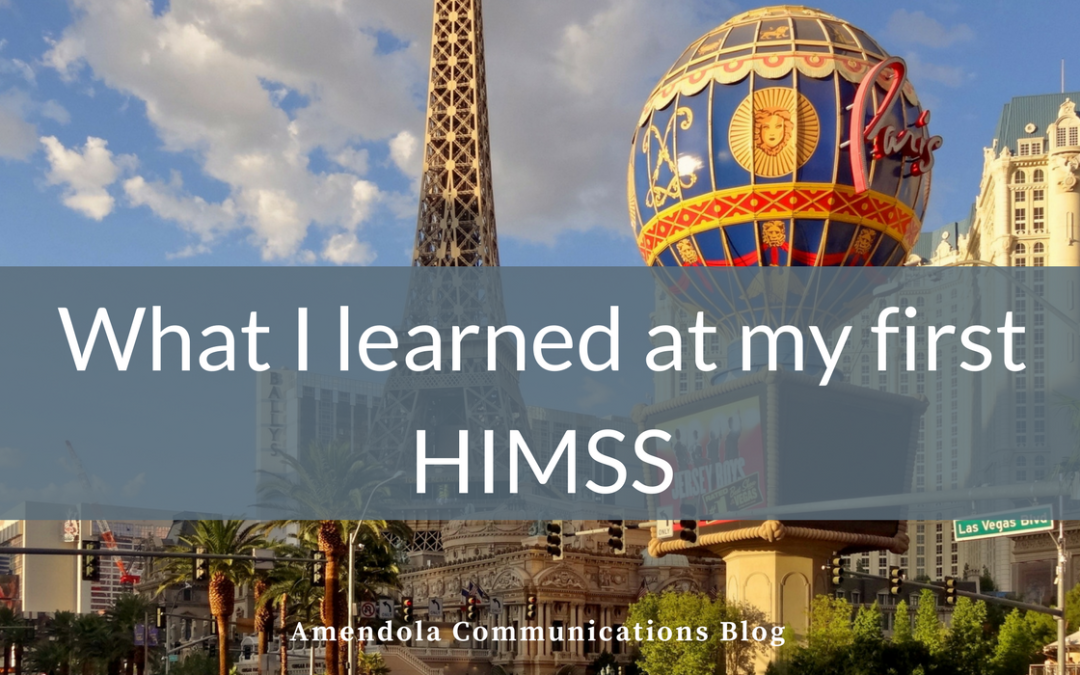
by Jenna Warner | Apr 18, 2018 | Blog
First and foremost, this is a BIG show. Okay, obviously this is a big show. But it’s important to understand this isn’t the type of trade show where the cool startup with hopes and dreams of changing the world can make a huge splash. At least, not without a plan.
As a first-time attendee, there were some confirmations and surprises that led to a few insights. Here are some tips to help kick-start your strategy for your first HIMSS.
Stop singing the same old song
Reporters are booked solid well before the conference begins and they are hearing “stories” all day. If it’s your first HIMSS, you may be surprised by the amount of similar ideas, products and solutions across the board. Let me tell you, the editors are not.
Whether it’s your first HIMSS or your 30th, make sure you have something to say. Passion plus results are rewarded in almost any industry and the same rings true in Healthcare IT. Don’t offer one without the other.
No one wants to hear about a product and all the technical aspects you have painstakingly perfected. They want to hear about what your solution is going to do for them (or their readers) now.
Don’t get it twisted. We are all very thankful for all the hard work, but the fact of the matter is there is too much going on to appreciate all of that hard work. Have something to say with weight.
Do your research before you go
Don’t waste time deciding what you’re going to do once you get to HIMSS. Everything moves too fast, and it takes too long to get from one place to the other. The conference may be several days long, but it goes by in a blink. Have a plan as an attendee or as an exhibitor.
Most of all, don’t make meetings with people that don’t make sense. Time, space and (good) coffee are precious luxuries at HIMSS. Don’t waste them.
Talk to people, and ask questions
Not just any questions – ask the one that you are hesitant about.
As a millennial, I think that we undervalue face-to-face interactions. There is something about being in front of people where you can get answers to questions you might not ask in a formal meeting setting or email. For one, they can’t just ignore your question.
Before all of my telehealth peeps give me a hard time – don’t worry, I still have no interest in physically stepping into my doctor’s office on a regular basis. Telemedicine rules!
A lot of flash doesn’t mean a lot of cash…flow
It was sad to see the booths with a premier spot just watch all the attendees walk by without giving their super cool mini golf game a try. Booth traffic success comes in layers, and although this conference was in Las Vegas, you can’t just take a shallow approach to entice the shrewd people of this trade show.
Take a note from the brilliant Lisa Chernikoff, “As savvy marketing professionals know, the best trade show marketing strategies start early and establish a regular cadence of communication.” Emphasis on start early. Your booth traffic strategy should not rely solely on a game of putt-putt. Meetings with a purpose, strategies that give attendees something they can use to fix their problems and well thought-out strategies for making conversation are what seem to be the keys to success at mega trade shows such as HIMSS.
The thought of tackling this type of huge trade show without a specialized agency and expecting results brings to mind a few analogies
- Scuba diving without a tank
- Planning a wedding for tomorrow
- Teaching a fish to ride a bicycle
- Baking a cake with cardboard appliances
And of course, the rumors are true – you will always be lost, hungry, searching for an outlet and totally amazed at what we are doing as an industry to improve healthcare. Now, I need to go buy some AirPods and avoid ever using or hearing the word leverage again.
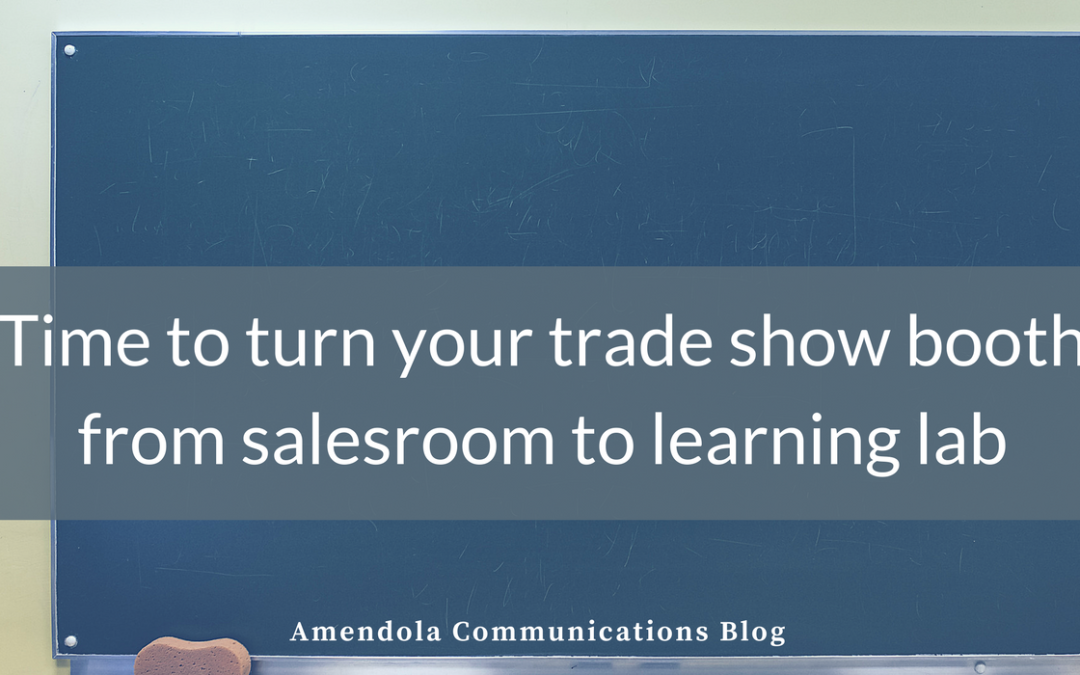
by Stephanie Janard | Feb 14, 2018 | Blog
“Be sure to bring back lots of product literature from the trade show,” said no one ever.
As my colleague Lisa Chernikoff pointed out in a recent blog, people simply don’t go to trade shows to buy your product. They go to learn. But when they approach your booth, what do they see to compel them to stay and learn something new? If you’re drawing a blank, it’s okay. That’s what this blog post is for: to show you some new ways to draw traffic in your booth and impart meaningful information that will “stick” with attendees well after they leave.
Strategy #1: Instead of a banner announcing your product or company, announce that “class is in”
Does your company address patient engagement, value-based care or some other hot concept in healthcare? Consider making your entire booth a class in this concept, with the appropriate banner, such as “Value-Based Care 101” or “Patient Engagement Pop-Up University.” And sure, by all means include “presented by (your company)” or your company logo. But make sure this is the secondary, less prominent message.
Strategy #2: Instead of a demo, offer a class or game
Once you’ve attracted the attendee’s interest with your signage, be sure to make good on its promise. Offer attendees an experience that imparts valuable knowledge to them. Here a customer champion can be recruited to give short 20-minute presentations about their success in addressing the theme of your booth, such as value-based care or patient engagement. To capture leads, have attendees register for the session. Make sure this isn’t a product pitch, though. While some mention of your product can be given, attendees want to hear a real world story from their peer not an infomercial.
A quiz that asks provocative questions paired with equally provocative answers is another effective way to make knowledge (and by extension, your company) “stick” with an attendee.
Even a standard product demo can be upgraded to a more experiential event. In one example, Medicomp, an Amendola client, takes attendees through a virtual experience in the form of a game, which is essentially a 3-minute product preview. It highlights the key capabilities and product features, as well as the streamlined user experience, in the context of winning a prize rather than buying a product. The experience gets attendees interested in learning more and helps to weed out the wrong people so the Medicomp team knows when it’s appropriate to invest time in a full demo.
Strategy #3: Instead of brochures, put out case studies, guides and other learning material
It’s not that product literature doesn’t have its place, but on its own, a brochure is most valuable to pack rats who can’t stand to throw anything away. But as Chernikoff bluntly notes in her blog, even that fate is unlikely.
“Nobody wants your marketing brochure! It will end up in the next trash can even if they take it, and if it makes it back to their room, it will end up in the hotel trash can. They also really don’t want a folder with multiple product one-pagers and a recent press release about your new product,” she writes.
A better idea, Chernikoff continues, is to give attendees material such as case studies that illustrate real-world scenarios while highlighting your unique value proposition. I would add to that guides, how-to’s, checklists and other learning material that, collectively, will make the reader far more knowledgeable on a topic than he or she was before.
Of course, the material should be compellingly written so that it will actually be read and if you are going to invest in producing this material, it’s wise to also invest in a professional writer to write it.
We’ve created a number of such pieces for various clients to use at their trade shows, including a compilation of “user tips and strategies” for Bayer to hand out at RSNA; a brief on new technology services and trends for the lab for 4medica to distribute at the Lab Confab; and case studies for our client HealthBI to pass out to attendees at a regional conference.
Strategy #4: Instead of cheap tchotchkes, raffle off a quality and related prize
In keeping with the educational theme of your booth, how about raffling off a mini-library of interesting books on the topic your booth addresses? (All the better if your company authored one of the books!) You could open up the raffle to anyone, or narrow it down to attendees of your various learning sessions. Be sure to offer to ship some or all of the books for free, as traveling with more than a few will be difficult for most attendees.
Another idea: give attendees a thumb drive titled “Teach Your Own Patient Engagement Class” or “Value-Based Care 102” or something similar that is stocked with educational content.
In conclusion, keep in mind that an educational trade show booth also aligns well with today’s information-hungry buyers. You’ve likely heard that when it comes to big ticket items, most people have made up their mind what they’re going to buy and from whom–before they actually reach out to a vendor. This is why so many companies have an educational, content marketing strategy in place today, and why it makes sense to take a similar approach with your tradeshow booth. Make it a place of learning and watch the traffic and good leads follow.
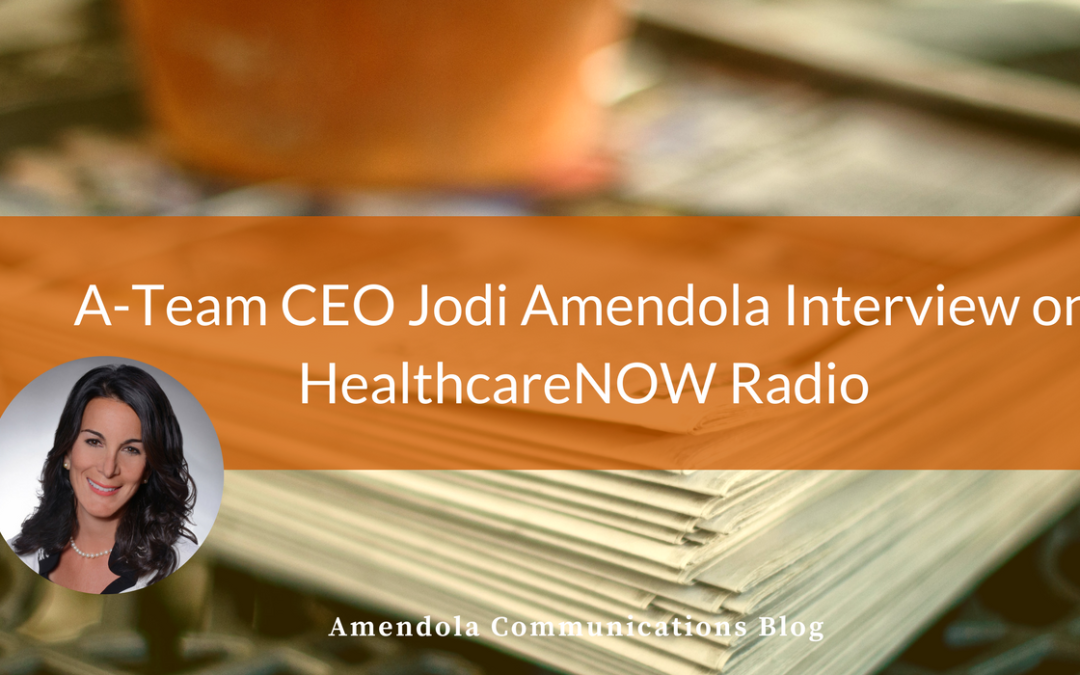
by admin | Feb 5, 2018 | Blog
We’re always excited when one of our own steps out from behind the scenes to grab the spotlight. In this episode of “What’s My Tagline?” from HealthcareNOW Radio, host Carol Flagg interviews Amendola Communications CEO (and self-described HIT Connector) Jodi Amendola. Jodi, of course, was recently named one of PR News’ Top Women in PR for 2017.
Over the course of the 27 minute discussion, Jodi shares her personal story on how she got started in healthcare IT, how Amendola Communications came to be one of the top healthcare IT PR firms in the country, and how the industry has changed from the early days of print, when it could take three months for a story to appear, to the 24 x 7 news cycle of today.
She then goes into detail on how to be successful exhibiting and speaking at HIMSS – including the planning that goes into it and the follow-up needed to maximize the benefits afterward. Jodi also shares some specific examples of how AC clients have been successful in reaching their target audiences, whether those are prospects, journalists, or analysts. The interview ends with Jodi sharing her look ahead to what 2018 will bring. Definitely worth a listen!
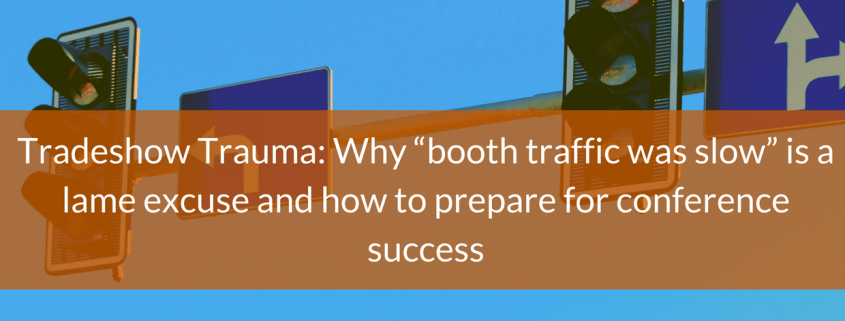
by Lisa Chernikoff | Jan 3, 2018 | Blog
As a marketing and PR professional who has spent countless hours in tradeshow booths and walked more than 20,000 steps at the HIMSS conference while wearing heels, I’ve experienced both the glory and the defeat of being an exhibitor. And while there is no better feeling than packing up your boxes, tearing down the booth and heading home after a job well done, there is also no greater pain than realizing that your company’s precious time and resources were virtually wasted because your conference strategy fell short.
After every tradeshow, it’s common to speak with exhibitors who complain that “booth traffic was slow” and cite that reason as the root of their conference failure. But let’s be honest — that’s a lame excuse. It’s the easy way out to blame poor performance at the show on exhibit hall organizers rather than reflecting on how your team may be at fault, or at least largely contributed to the problem.
In fact, upon much-needed reflection, those complainers would see that they are likely committing the cardinal sin of tradeshow marketing. They’re only focused on the conference. They’re not focused on the holistic strategy that enables the smartest, more successful companies to succeed at conferences again and again and again.
To avoid this tradeshow trauma and emerge triumphant in 2018, it’s critical for companies to have a three-pronged approach that includes not just a conference strategy where you show up and wait, but also and even more importantly a pre-conference strategy and a post-conference strategy.
Here are 4 insider secrets to help you get started:
#1 Never rely on booth traffic
Sure, booth traffic is nice and we all want it but it’s even better to drive traffic to your booth in advance. As savvy marketing professionals know, the best tradeshow marketing strategies start early and establish a regular cadence of communication. Most companies find that implementing a targeted email campaign starting 6 weeks in advance of the show is ideal but some may find that 8 weeks or 4 weeks works best for their audience.
These emails should be geared to both sales prospects to schedule meetings or demos and current clients to have a face-to-face touchpoint and determine cross-sale opportunities. As always, the top-performing emails are brief and targeted to attendees by role and job setting. It’s also best to have a form where attendees can schedule time and then receive a confirmation with a calendar invite. Why is that so important? It gets you on attendees calendars before they arrive at the show and are overwhelmed. Also, then your team can send them reminders about the scheduled slot or reach out if they don’t arrive as planned.
#2 Winning is great but winning isn’t everything
Pre-conference email campaigns can also invite attendees to activities in the booth such as speaking events or games instead of just meetings and demos. They can also offer attendees “a chance to win” and highlight big prizes, but they must not rely on the allure of a gimmick alone. There are few too many promotions for your giveaway to break through the noise. A pre-conference strategy that shares quality content, in addition to touting “a trip for 100 around the world” is the safest, most effective way to not only illustrate thought leadership but also to create brand awareness of your company as leader and innovator that offers far more than just a chance to win ““ but rather real ROI.
#3 Think like an attendee
Spoiler alert for those many hours spent in the booth. Nobody wants your marketing brochure! It will end up in the next trash can even if they take it, and if it makes it back to their room, it will end up in the hotel trash can. They also really don’t want a folder with multiple product one-pagers and a recent press release about your new product. Please note that this realization also spares your marketing team and admin hours of folder stuffing. Yes, you’re welcome.
The big idea here is to remember why attendees are at the conference. Most attendees are there to learn, not to purchase your “ground-breaking, best in class, fully integrated solution.” So, give them what they want like client case studies with real-world insights and thought leadership that demonstrates your knowledge and unique perspective. That’s the true value proposition that won’t get throw in the trash.
#4 Follow-up, follow-up, follow-up
It’s great to have a successful show, but it’s what companies do afterwards that matters most. It’s all about the follow-up communications, which should include a series of e-blasts, with the first prepared ahead of time and sent within 1-2 days of show close. The post-show e-blast should provide an opportunity to continue to engage with your company by downloading a new piece of content, registering for a webinar, or scheduling a full product demo for their broader team. However, the e-blast is not enough. To see results, it must be complimented by personalized follow-up from the sales team where there is even a small percentage chance of generating new pipeline. Without this timely and dedicated post-show communications, it’s impossible to reap the benefits of your hard work pre-show and at the show.
Remember, it doesn’t matter how many people attend the tradeshow. Only that the right people make it to your booth.
Instead of leaving success to chance, put together a three-prong plan that will tip the odds in your favor. It sure beats coming up with lame excuses later.




